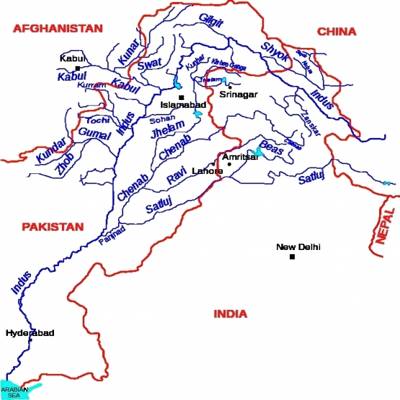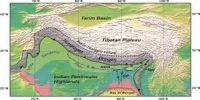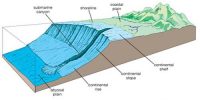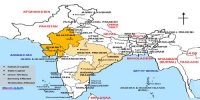The Indus System of Himalayan Drainage
The flow of water through well-defined channels is known as drainage and the network of such channels is known as a drainage system. The Himalayan drainage system has evolved through a long geological history. It mainly includes the Ganga, the Indus, and the Brahmaputra river basins.
The Indus System
It is one of the largest river basins in the world, covering an area of 11,65,000 sq. km (in India it is 321,289 sq. km and a total length of 2,880 km (in India 1,114 km). The Indus also was known as the Sindhu, is the westernmost of the Himalayan rivers in India. It originates from a glacier near Bokhar Chu (31°15′ N latitude and 81°40′ E longitude) in the Tibetan region at an altitude of 4,164 m in the Kailash Mountain range. In Tibet, it is known as “Singi Khamban; or Lion’s mouth”. After flowing in the northwest direction between the Ladakh and Zaskar ranges, it passes through Ladakh and Baltistan. It cuts across the Ladakh range, forming a spectacular gorge near Gilgit in Jammu and Kashmir. It enters into Pakistan near Chillar in the Dardistan region. Find out the area known as Dardistan.

The Indus receives a number of Himalayan tributaries such as the Shyok, the Gilgit, the Zaskar, the Hunza, the Nubra, the Shigar, the Casting and the Dras. It finally emerges out of the hills near Attack where it receives the Kabul River on its right bank. The other important tributaries joining the right bank of the Indus are the Khurram, the Tochi, the Gomal, the Viboa and the Sangar. They all originate in the Sulaiman ranges. The river flows southward and receives ‘Panjnad’ a little above Mithankot. The Panjnad is the name given to the five rivers of Punjab, namely the Satluj, the Beas, the Ravi, the Chenab and the Jhelum. It finally discharges into the Arabian Sea, the cast of Karachi. The Indus flows in India only through the Leh district in Jammu and Kashmir.
The Jhelum, an important tributary of the Indus, rises from a spring at Verinag situated at the foot of the Pir Panjal in the south-eastern part of the valley of Kashmir. It flows through Srinagar and the Wular lake before entering Pakistan through a deep narrow gorge. It joins the Chenab near Jhang in Pakistan.
The Chenab is the largest tributary of the Indus. It is formed by two streams, the Chandra and the Bhaga, which join at Tandi near Keylong in Himachal Pradesh. Hence, it is also known as Chandrabhaga. The river flows for 1,180 km before entering into Pakistan.
The Ravi is another important tributary of the Indus. It rises west of the Rohtang pass in the Kullu hills of Himachal Pradesh and flows through the Chamba valley of the state. Before entering Pakistan and joining the Chenab near Sarai Sidhu, it drains the area lying between the southeastern part of the Pir Panjal and the Dhauladhar ranges.
















